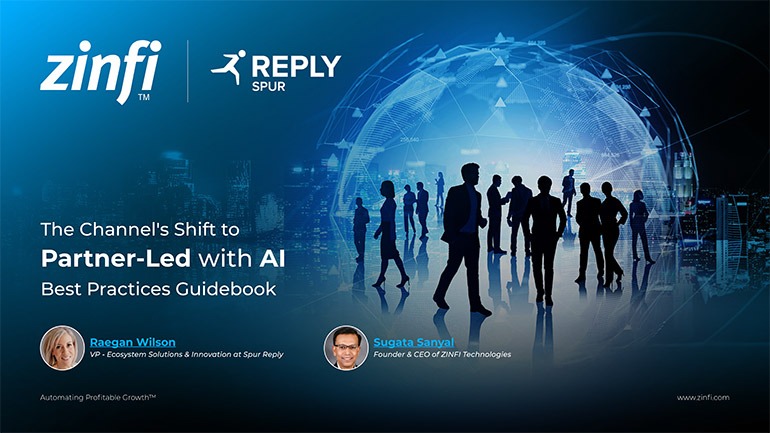Best Practices Articles

The Paradox of MDF Marketing
Market development fund (MDF) marketing is a major source of activity for organizations selling through the channel. Over the past few decades, MDF marketing has become a lot more organized for most companies; however, getting true return on investment (ROI) from these programs is still a bit of an art, even a mystery. In this article, we will explore some of the paradoxes of MDF marketing.
Before we take a deep dive, let’s step back for a moment and consider how market development funds are typically deployed. Most organizations selling through the channel tend to take somewhere between 0.5% and 2.0% of their topline revenue and allocate it to co-marketing activities. (The classic example of this is Intel Inside.) In many cases, these co-marketing activities are called contra-revenue activities, and they are not included in the calculation of the net revenue of an organization. Now, in setting aside this money for market development funds, vendors tend to create marketing programs for their channel partners. These marketing programs range from partner training and end-user marketing events to collateral printing, advertising and various other end-user-facing marketing and sales activities.
The key challenge in MDF marketing, however, is figuring out what works and what doesn’t work. Most of the investments tend to happen in relatively small chunks, yet successful marketing often requires a critical mass investment. That’s one key reason most MDF marketing programs don’t really work. Vendors typically spend a lot of effort trying to figure out why one particular program didn’t work, but in the process they tend to miss the bigger picture. One way of avoiding this is to have a relatively large number of partners replicate the same program across multiple parts of a country. This way, the overall program reaches critical mass and partner-specific execution variabilities can be eliminated.
In addition to figuring out overall ROI from an MDF marketing program, replication and scale across multiple countries also remain a challenge for most vendors. Most organizations lack a reliable infrastructure that can take a successful program from one country and replicate it in other countries. As a result, in many cases companies will come up with different programs for each market. This can lead to significant reduction in ROI, because successful programs don’t get scaled, and most MDF marketing activities end up in a sort of permanent trial-and-error mode.
Perhaps the biggest barrier to ROI in MDF marketing is the tendency of many organizations to take a short-term approach, rolling out MDF marketing programs tied to fiscal quarters. This is often driven by the organization’s need to market certain products and services. These efforts typically result in poor execution of a bad idea—a true double whammy. Do you think I am being overly critical? Maybe, but hear me out. Assuming you have a broad channel, it typically takes half the channel about six months to find out about a program, provided a vendor is aggressively pushing it. There are just too many programs and too many activities to choose from. Channel marketing teams tend to be driven by channel sales objectives, and forget that marketing is not a quarterly initiative. It’s difficult to build momentum for a potentially successful program when you fail to adopt a long-term view of your marketing efforts.
This leads to the ultimate paradox of MDF marketing: The overall cost of MDF marketing tends to be as large if not larger than below-the-line marketing, yet MDF too often fails to deliver results at a scale. It can only do so if the vendor gets three things right: 1) it selects a scalable global program, 2) it runs the program over an extended period of a time and includes a significant number of partners, and 3) it looks for adjacent, similar programs to scale on the momentum. We have seen repeatedly that when companies align these three requirements, they are finally able to harness the true power of MDF marketing and overcome the paradox of excellence.
Best Practices Guidebook
 Modernizing Channel Marketing: AI and Ecosystem Enablement Best Practices
Modernizing Channel Marketing: AI and Ecosystem Enablement Best PracticesDownload for FREE
 The Channel’s Shift to Partner-Led With AI Best Practices
The Channel’s Shift to Partner-Led With AI Best PracticesDownload for FREE
 Hyperscalers, ISVs, and AI: Shaping the Future of B2B Software Distribution
Hyperscalers, ISVs, and AI: Shaping the Future of B2B Software DistributionDownload for FREE
 Definitive Guide to a Partner Ecosystem-First Sales Strategy
Definitive Guide to a Partner Ecosystem-First Sales StrategyDownload for FREE
 The Partner-Led Digital and AI Transformation Best Practices
The Partner-Led Digital and AI Transformation Best PracticesDownload for FREE
 Startup Talent Recruitment: Hiring Missionaries, Not Mercenaries
Startup Talent Recruitment: Hiring Missionaries, Not MercenariesDownload for FREE
 The Future of Partner Relationship Management with AI in Partnerships
The Future of Partner Relationship Management with AI in PartnershipsDownload for FREE
 Cybersecurity for the 99%: Strategies from the Frontline
Cybersecurity for the 99%: Strategies from the FrontlineDownload for FREE
 Mastering Partner Relationships: A Strategic Approach to Business Growth
Mastering Partner Relationships: A Strategic Approach to Business GrowthDownload for FREE
 Mastering Partner Relationship Management: Keys to SaaS Channel Success
Mastering Partner Relationship Management: Keys to SaaS Channel SuccessDownload for FREE
 Navigating the AI Revolution: Guide for Partners in the Microsoft Ecosystem
Navigating the AI Revolution: Guide for Partners in the Microsoft EcosystemDownload for FREE
 Mastering the Modern Buyers Journey: Sales Leader’s Guide to AI & Engagement
Mastering the Modern Buyers Journey: Sales Leader’s Guide to AI & EngagementDownload for FREE










